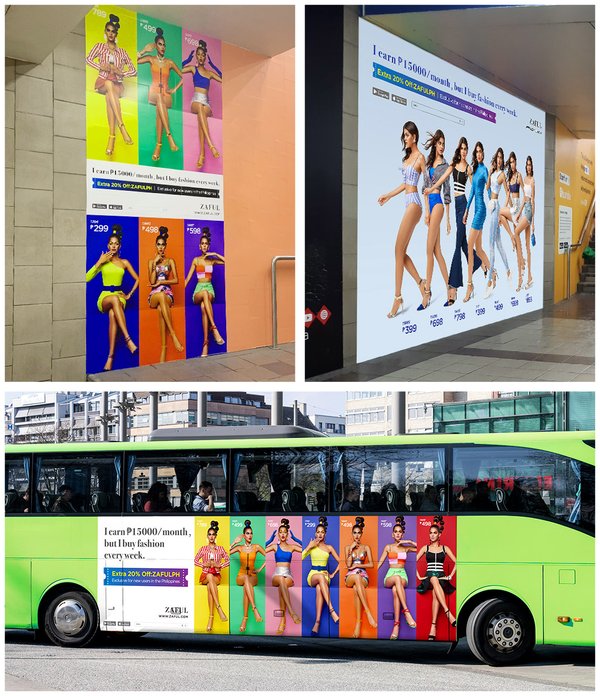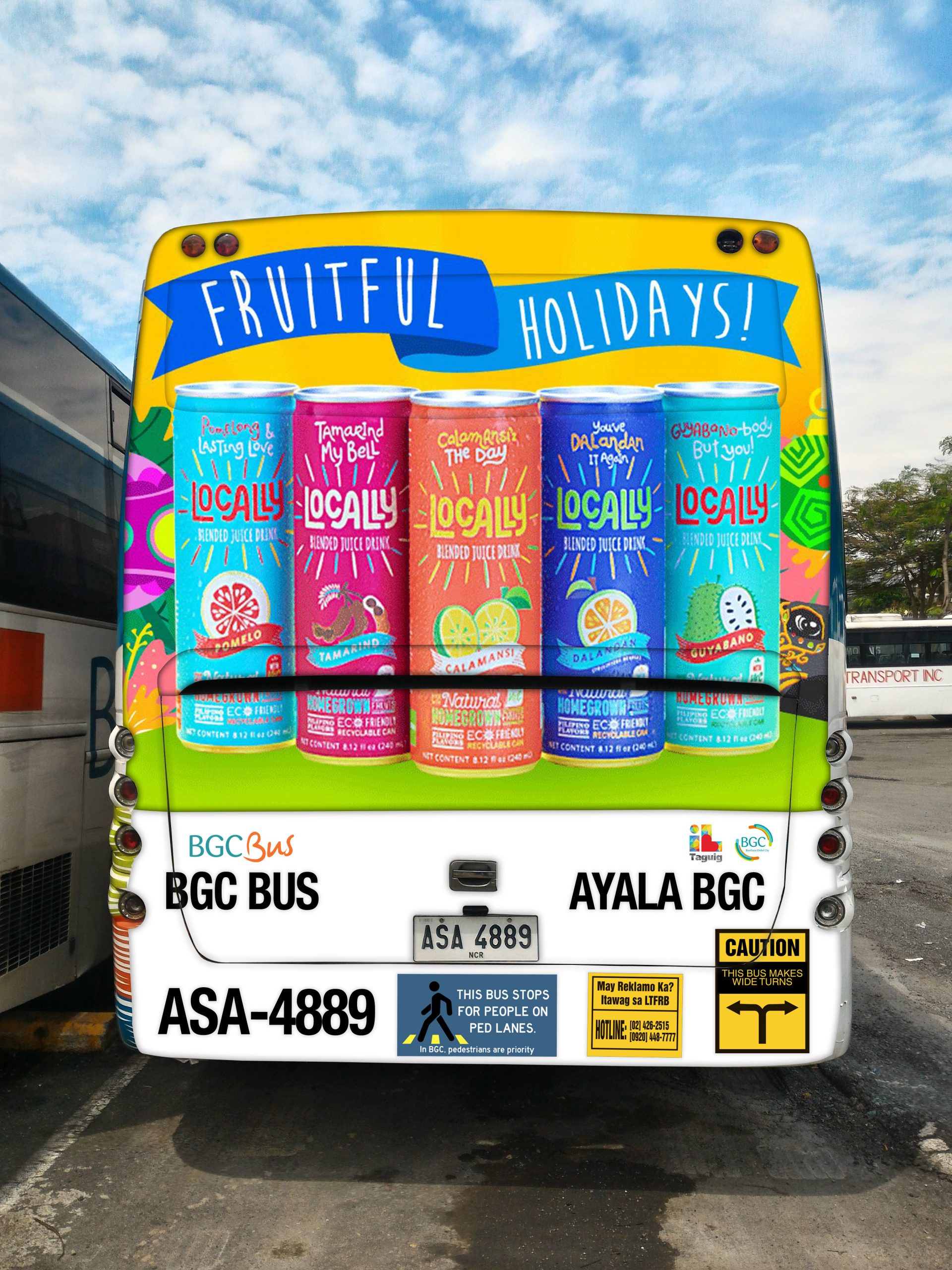Maximize Direct Exposure with Transit Advertising Philippines
Maximize Direct Exposure with Transit Advertising Philippines
Blog Article
Understanding the Duty of Transit Advertising And Marketing in Enhancing Brand Name Exposure and Customer Interaction
Transportation advertising and marketing has actually arised as a critical component in the marketing landscape, providing distinct opportunities for brands to raise their visibility and involve consumers efficiently. With the capability to reach a restricted and varied audience during their everyday commutes, these advertising and marketing techniques are not merely regarding presence; they are about producing meaningful connections with possible consumers. As we discover the multifaceted advantages and cutting-edge approaches within transportation advertising, it becomes important to think about just how these components collectively influence customer assumption and behavior, increasing questions concerning their long-lasting effect on brand loyalty.
Interpretation of Transit Advertising And Marketing
Transit advertising and marketing refers to the method of advertising products, services, or brands through advertisements placed around public transport systems. This kind of marketing encompasses a selection of placements, consisting of posters on buses and trains, electronic displays at transportation terminals, and covers on the exterior of cars. It intends to get to a varied target market, taking advantage of the high foot traffic related to public transit.
Transit advertising and marketing is purposefully placed to record the attention of commuters, that often spend substantial time waiting or taking a trip. By incorporating advertisements into the day-to-day regimens of individuals, brand names can produce a long lasting perception and foster brand name recognition. The medium is particularly effective in city atmospheres, where mass transit is a key setting of travel.
Furthermore, transit advertising and marketing can promote local targeting, enabling companies to get to specific demographics based on transit courses and terminal places. As urban populaces expand and making use of public transportation boosts, this advertising and marketing approach has actually gotten importance as a vital part of incorporated marketing techniques. The vibrant nature of transit advertising and marketing, incorporated with its ability to engage consumers in a restricted setting, highlights its relevance in modern advertising methods.
Benefits of Transportation Advertising
The performance of transit advertising lies in its capacity to provide a wide variety of benefits to brands looking for to enhance exposure and interaction. One of the key benefits is the comprehensive reach it provides; transit advertisements can effectively target diverse demographics throughout urban locations, getting to both travelers and pedestrians alike. This broad direct exposure substantially boosts brand name awareness.
An additional advantage is the high frequency of perceptions. As transportation automobiles follow recognized courses and quit at multiple locations, they create repetitive exposure that reinforces brand messages. This regularity promotes familiarity, which is important in customer decision-making.
Transit marketing is also affordable compared to other media platforms. Provided its expansive reach and possibility for high perceptions, brands commonly experience a reduced expense per thousand perceptions (CPM), maximizing their advertising spending plan.
Furthermore, transportation advertisements can develop a sense of community connection. By aligning with local transit systems, brand names can resonate with regional audiences and cultivate a sense of local pride. This local approach boosts brand name loyalty and interaction, making transit advertising and marketing an engaging selection for organizations intending to strengthen their existence in the marketplace.

Effective Strategies for Transportation Projects
To optimize the effect of transit campaigns, brand names should leverage calculated preparation and implementation customized to their target market. Initially, determining the group features of the audience using public transportation is important. This allows brands to develop personalized messaging that reverberates with prospective clients.
Following, picking the right transportation tools is important. Whether utilizing bus covers, subway posters, or electronic displays, each medium has distinct benefits that can improve presence. For instance, vivid visuals on bus wraps can draw in focus, while digital ads can be upgraded often to show timely find out here promos.
Moreover, integrating a natural branding strategy across transportation systems ensures consistency and enhances the brand name's identity. Using remarkable taglines and eye-catching designs will enhance brand name recall amongst commuters.
By employing these techniques, brand names can effectively harness the capacity of transportation advertising, cultivating greater understanding and connection with their target audience. Inevitably, a well-executed transportation campaign can drive substantial development in brand name presence and consumer engagement.

Gauging Effect and Involvement
In evaluating the effectiveness of transportation ad campaign, precise dimension of influence and interaction is vital for brand names seeking to enhance their advertising and marketing approaches. Metrics such as reach, frequency, and impacts provide fundamental data to examine visibility. Evaluating these factors aids figure out the amount of potential consumers are subjected to the promotions during their daily commutes.
Interaction can be further determined through customer interactions, such as website web traffic, social media sites states, and direct actions to calls-to-action featured in the ads. Using tools like QR codes or distinct Links can assist in tracking of consumer behavior straight linked to transportation projects. Studies and responses systems also act as beneficial techniques to gather qualitative data on customer perceptions and recall of the advertisement.
Additionally, advanced analytics and acknowledgment versions can correlate transportation direct exposure with subsequent purchasing actions, offering insights right into the roi. By employing a thorough approach that integrates qualitative and measurable measures, brands can create a nuanced understanding of their transportation advertising effect. Inevitably, this data-driven strategy allows brand names to improve their campaigns, ensuring they reverberate effectively with target market and enhance general brand name exposure.
Study of Successful Campaigns
Effective transit marketing campaign work as engaging examples of exactly how effective methods can boost brand name visibility and engagement. Transit Advertising Philippines. One significant situation is the "I Love New york city" project, which changed the city's picture and drew in millions of vacationers. By utilizing train advertisements, signboards, and bus wraps, the campaign pop over to this web-site developed a strong, cohesive brand identity, causing a significant uptick in tourism and regional company patronage
Another excellent project is Coca-Cola's "Share a Coke" campaign, which leveraged transit advertising and marketing to personalize the brand name experience. By including popular names on promotional products across various transportation platforms, Coca-Cola fostered a much deeper emotional connection with consumers, encouraging them to share their over here experiences on social media.
Furthermore, the "Got Milk?" campaign efficiently utilized mass transit advertisements to reach a wide target market, enhancing the message of the relevance of milk in a well balanced diet plan. The project saw a measurable rise in milk usage in target demographics.
These study show that when executed attentively, transit advertising and marketing can substantially enhance brand name exposure, foster customer interaction, and drive measurable outcomes, showing its vital duty in modern-day advertising techniques. - Transit Advertising Philippines
Conclusion
In final thought, transportation advertising serves as an essential tool for enhancing brand exposure and promoting consumer engagement. Eventually, the ability to gauge involvement and evaluate successful situation studies highlights the performance of transit advertising in driving brand commitment and consumer interactions.
Transit advertising has actually emerged as a crucial component in the advertising landscape, supplying unique opportunities for brands to elevate their exposure and involve customers properly.In addition, transportation advertising can help with localized targeting, enabling companies to get to certain demographics based on transportation courses and station places.In reviewing the effectiveness of transit advertising and marketing campaigns, precise dimension of impact and interaction is necessary for brands looking for to maximize their advertising strategies.Successful transportation advertising and marketing campaigns serve as compelling instances of just how effective techniques can boost brand presence and engagement.In final thought, transit advertising offers as a crucial device for boosting brand visibility and fostering consumer engagement.
Report this page